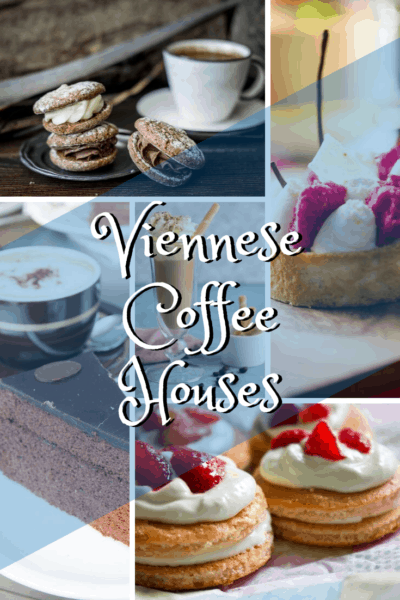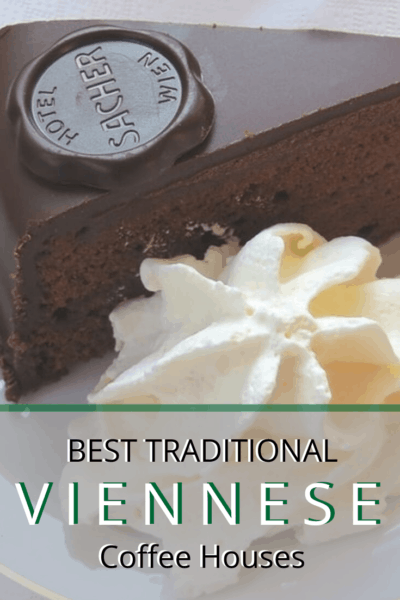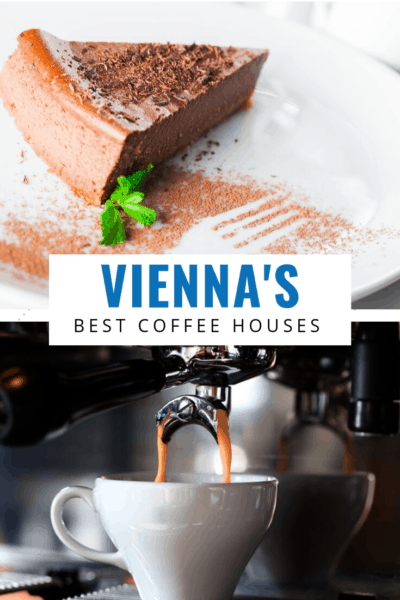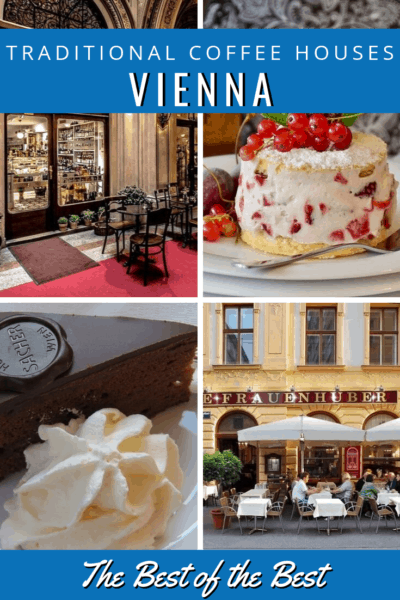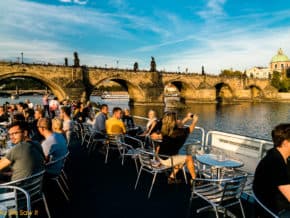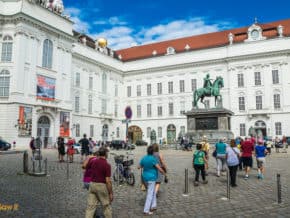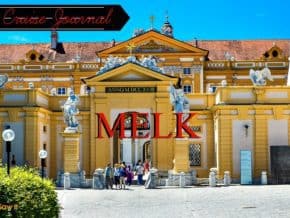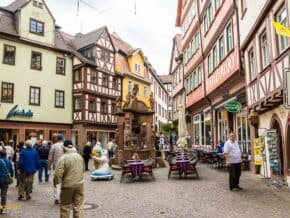Vienna, Austria’s capital, is known for imperial palaces, historic buildings, world-class museums, and of course, coffee houses. The cafes in Vienna, Austria were once a magnet for artists and intellectuals, including the likes of Mozart, Beethoven, Stalin, and Trotsky. They would spend hours together, debating controversial subjects and sharing their insights.
Today, Viennese coffee houses are one of the city’s main attractions, revered for having had such an important historical role in shaping Viennese culture.
So what is the hype all about? What exactly qualifies as a traditional Viennese coffee house, and where are the best cafes in Vienna?
What’s the best coffee house in Vienna?
In Vienna, coffee and coffee shops are a huge part of the cultural identity, and every visitor should experience it. When we were there last, we spent much of our 2 week winter itinerary either walking through the Christmas markets or warming up in the most famous Vienna coffee houses.
The way we look at it, enjoying the local ambiance is a big part of the fun of going somewhere new. Not wanting to waste precious time, we did some research before we went. Which coffee houses in Vienna have been around for over a century and which have historical value?
To be honest, our list was rather long, so we weeded out places like Cafe Demel that are better known for their pastries. Sorry, but we there were too many to make a “10 best coffee houses in Vienna” article. Eleven is the best we could do.
Read on for more about Viennese coffee culture and where to have coffee in Vienna. I’ll update the images once I figure out where Dan stored the photos from our trip.
History of Vienna coffee houses
You’ll find a mass of nostalgia wrapped around the Viennese coffee house concept. They have never been just a place to enjoy your coffee. From Day One, they have offered a place of solitude for intellectuals and residents to linger, read newspapers, and sip on the bitter bean.
The story behind these historic cafes is tied to the Siege of Vienna in 1683. People like to say that coffee houses were brought about after the Turks left a few forlorn bags of coffee beans behind when they retreated. Whether or not that’s true, the introduction of coffee beans to Vienna soon led to coffee houses opening across town, becoming a part of Vienna’s identity.
Many of the most renowned traditional coffee houses in Vienna are over 300 years old. While they have been renovated and updated, they remain mostly unchanged. There are also many new and reformed coffee houses – but they share the same intention of being an extended living room.
What qualifies as a traditional Vienna coffee shop?
Typically, the components of a traditional Vienna coffee shop include:
- marble tabletops,
- Thonet chairs,
- newspaper tables
- interior design details in Historicism style
The coffee house culture offers visitors a place to sit for hours and talk, write, play games, consume an unlimited number of newspapers and journals, and simply think.
In many traditional Viennese coffee houses, they play piano music in the evenings and hold literary readings. Almost all provide snacks and desserts, like cakes and tarts. It’s completely normal for a customer to linger on his own for hours, studying the omnipresent newspaper and feeling no pressure to order anything more.
When visiting Vienna, you’ll find that the (often grumpy) waiter will serve an obligatory glass of cold tap water along with your coffee. He will continue to bring free refills throughout the duration of your visit. (Maybe that’s why he’s grumpy, who knows?) You’ll also find that most cafes have a table stacked with the daily newspaper, all so their patrons can read and relax in their cozy environment.
Best coffee houses in Vienna
With so much history and culture tied to its cafes, choosing among the coffee houses to visit in Vienna can be difficult. If you’re looking for the best coffee in Vienna, here is a guide to the coffee houses we visited and enjoyed:
Café Pruckel
Cafe Pruckel embodies all the traits synonymous with the Viennese coffee drinking culture. This beautifully decorated Vienna-style cafe is a 1950’s pastel pink color and filled with soft furnishings like scuffed armrests and faded upholstery, along with a rustic linoleum floor. The ceiling is donned with a signature chandelier and a gold plated stucco ceiling.
Combined, this creates an atmosphere that is a much loved social meeting point in Vienna.
Visit Monday, Wednesday and Friday between 7 pm and 10 pm, and you can enjoy live piano music. To top it all off, you can also buy a famous Kaffeehaus newspaper holder as a souvenir.
Photo cred @Freddymahr from Instagram
Café Central
Cafe Central was first opened in 1876 and is built in the style of Romantic Historicism. This is one of the most famous coffee houses in Vienna, having seen notable historical figures as Theodor Herzl, Leon Trotsky, Adolf Hitler, and Sigmund Freud walk through its doors.
The cafe closed at the end of World War II, but ultimately was refurbished and reopened in 1975. The old building’s architecture has been preserved and combined with new elements to ooze originality, charm, and style.
Cafe Central offers traditional Viennese cuisine, homemade cakes, pastries and ambient piano music – all in line with the traditional sense of a coffee house in Vienna.
Café Landtmann
Another among the famous Vienna cafes that have seen notable personalities walk through its doors, Cafe Landtmann has hosted the likes of Freud, Paul McCartney and Hillary Clinton.
You’re unlikely to find another cafe in Vienna that boasts the same mix of plush upholstery, white table cloths, fine wood panels, historical inlay work, and 1920s-era mirrors. The cafe prides itself on its wide range of freshly-baked cakes and strudels, but if you’re ready for a meal, they offer those as well.
ⓘ TIP: While you’re in Vienna, be sure to try some traditional Austrian dishes, like Wiener schnitzel, Backhendl, tafelspitz, and goulash.
Café Frauenhuber
This is the oldest coffee house in Vienna, where Mozart and Beethoven used to play table music. Cafe Frauenhuber exudes a livingroom vibe, full of Viennese charm. Everything is set in a cozy manner, with red velvet benches, lace curtains, and Persian carpets on display.
If the great atmosphere isn’t enough to draw you in, then the delicious coffee and Viennese specialties surely will.
Café Sperl
This coffee house in Vienna exudes charm and offers its visitors a cozy atmosphere. Guests often like to spend hours reading newspapers, gazing at the velvet benches, old piano and billiard table.
You’ll find a variety of international newspapers at Cafe Sperl. If you visit on a Sunday afternoon, you may find live operetta tunes being played in honor of the late composer Emmerich Kalman. He was one of the many regular writers and young artists who visited here.
Cafe Sperl prides itself on its delicious Sperl cake. The recipe is a secret; all we know is that it contains milk chocolate, vanilla, cinnamon, and almonds.
Café Hawelka
This Viennese coffee house is another popular meeting point for artists, and an oasis of peace right in the middle of the city. Cafe Hawelka is more of an institution with authentic charm.
You can expect vintage carpets and wooden Thonet chairs, as well as a creaking parquet and unusually friendly waiters. It’s probably the most legendary bohemian spot in Wien and is known for its yeasty, jam-filled sweet rolls.
Café Diglas
Cafe Diglas doubles up as one of Vienna’s best patisseries. They offer live piano performances on Tuesday, Wednesday, Friday and Saturday evenings. The cafe offers an amazing experience beyond the usual coffee house culture in Vienna.
Expect a traditional look and feel with a cozy atmosphere and the most delicious red currant cake! (as well as many other tasty treats and pastries).
Café Schwarzenberg
This coffee house is famed for being the oldest cafe on the Ringstrasse, but as far as we know, it was never a favorite hangout among the 19th-century notables. Rather, this is the type of cafe where businessmen go to unwind with a coffee and newspaper after work.
This cafe has been a popular meeting point since it opened in the 19th century and has seen many locals enjoying their conversations over traditional tea and coffee specialties.
Café Sacher Wien
Cafe Sacher is probably the most famous Viennese coffee house in the city, but certainly not the most genuine or original. You can usually expect to find a long queue of tourists waiting to try the famous Sacher-torte cake.
The original Sacher-torte was first created in 1832 and has an interesting history that included 20 years of cake wars. Long story short, this recipe is a guarded secret, and you can only get the “original Sachertorte” here.
So what is Sachertorte? It begins with two layers of soft chocolate sponge cake, thinly filled with apricot jam, and finally enveloped in a thin layer of glassy chocolate icing. Every serving comes topped with a chocolate Sacher coin and is accompanied by a portion of unsweetened whipped cream.
Maybe it’s because it’s such a tourist attraction, but the atmosphere at this popular coffee house is more upmarket than other older, more authentic coffee houses. Expect rooms that are reminiscent of imperial times. with red velvet-covered benches.
ⓘ TIP: If the lines at Sacher are too long, head over to Demel bakery. Both laid claim to offer the “original Sacher torte” for a reason.
Café Gerstner
Gerstner Coffee House Vienna is a bohemian institution with a history from back in the 1840s when the Gerstner’s opened a pastry shop in central Vienna. Today, you’ll find that they still offer thriving culinary excellence. As well, their delicious aroma of coffee will draw any passers-by into the historic cafe.
It’s a trendy spot for urbanists and a popular stop near the Naschmarkt. They offer a mix of Viennese and Berlin food in a more modern style of coffee house, serving mouthwatering cakes and attractive open sandwiches.
Kleines Cafe
Unlike the previous cafes we’ve mentioned, Kleines Cafe (which means “little cafe”) has only been around since the 1970s. This cafe is the one you’re likely to find full of locals, with an authentic Viennese atmosphere. It’s a charming, low-key cafe where people go to get off the well-trodden tourist track, and enjoy some tranquility in this small, smoky coffee house.
The cafe has an almost Mediterranean feel, centered around a cobblestoned square, an ancient church, and an old fountain.
What to order in a Viennese coffee house
If you visit any coffee houses in Vienna, you’ll soon discover that you can’t simply order “a coffee.” Traditionally, Viennese cafes consider “coffee” as an umbrella term for a variety of coffee specialties.
Some Viennese cafes even offer a delightful array of alcoholic coffees among their specialties. These enticing concoctions, often laced with spirits like schnapps or rum, add an extra layer of warmth and indulgence to Vienna’s rich coffee culture.
You probably already know how you prefer your coffee. But if you want help figuring out what to order, here’s our guide to some of the most popular coffee styles:
Kleiner Schwarzer (Small Black)
Simply put: a shot of espresso. These are single shots that nowadays come from an espresso machine rather than a traditional Italian Moka. If you’d like a double-shot espresso, then you’d ask for a “großer Schwarzer” (großer means “big”).
Kleiner Brauner (Small Brown)
This is an espresso that is generally served with a small jug of cream or milk. It’s basically a Viennese version of an espresso macchiato.
Verlängerter (Long Black)
A Verlängerter is an espresso made with twice the usual amount of water – making it a long black. You can also order it with some milk on the side, as a Verlängerter Braun.
Wiener Melange
A melange is the most classic style in Vienna. It consists of an espresso that is infused with hot milk and then topped with a dollop of milk foam. (Some cafes top it with whipped cream instead. Technically, it’s not a melange, but no one’s going to listen to us.)
Be sure to try this at least once!
Cappuccino
Traditional coffee houses serve a cappuccino the Italian way: with milk foam. Ifi you see Cappuccino con Panna, it will come with whipped cream instead. Note that in many cases, the terms melange and cappuccino are used interchangeably.
Franziskaner
A Franziskaner is similar to a melange, but it’s served with a dollop of whipped cream instead of milk foam.
Other coffee specialties in Vienna
In many traditional Viennese coffee houses, the coffee menu extends beyond an entire page. Some coffeehouse specialties include rum or liqueur. Those would come in particularly handy during winter in Vienna.
Final thoughts on traditional coffee houses in Vienna
Vienna doesn’t just have loads of coffee shops, it has a culture of coffeehouses stretching back centuries. Before the invention of smartphones, this is where friends met and how people kept up with the local gossip and international news. The cafes welcomed anyone, regardless of class or age.
Here, cafes reflect Vienna’s open approach to life, welcoming people to hang out, think, read, write, and debate new ideas. This is why so many famous writers and forward-thinkers come from Vienna, and why writers sometimes wrote entire novels in their cafes of choice.
And the coffee house culture in Vienna still lives on. Even today, centuries later, you will still feel like you’re in somebody’s living room. Lounge for hours with the locals, reading the newspapers, chatting, and sipping on a variety of Viennese coffees. You’ll feel right at home.
Any of these traditional coffee houses are worth visiting, even if you only have one day in Vienna!

